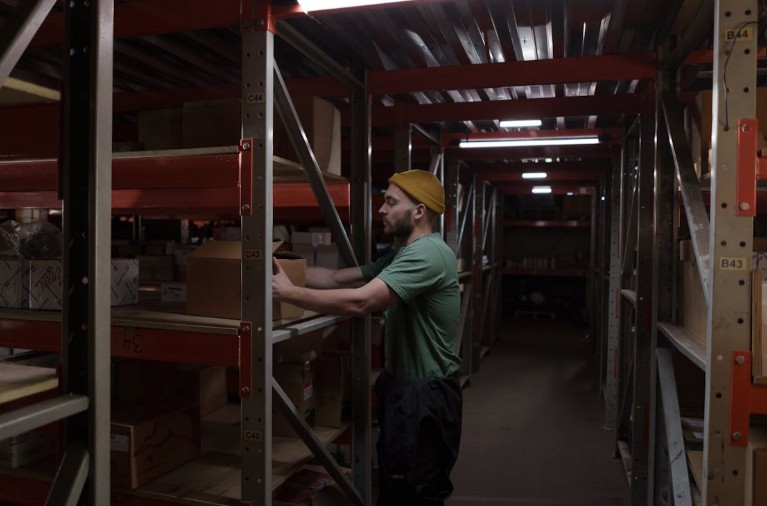Are you going to move house?
This is where most people go wrong:
They just look for the cheapest storage space they can find. But what happens when your grandmother's dresser gets warped beyond repair? What about those expensive electronics when the temperature fluctuations fry their circuitry?
That's what climate controlled storage is for.
4 Mystery Tips to Store Belongings Safe & Sound When Moving Home
Temperature Protection: Why It Matters So Much
The Hidden Cost of Temperature Damage During Moves
Climate Controlled Storage: What Belongs Are Absolute Essentials
Tips for Choosing the Best Climate Storage Solution
Temperature Protection: Why It Matters So Much
Let me give you something you don't know…
Up to 20% of all moves have an insurance claim filed against them. Temperature damage is one of the top causes. But most people don't even think about temperature as a risk factor.
Temperature swings are wrecking people's belongings in regular storage units:
Temperature climbs to 120°F in summer. Freezes below zero in winter. Daily temperature fluctuations are a constant shock to possessions.
Your valuables weren't built for these extremes. Wood swells, electronics suffer condensation damage, leather cracks and becomes brittle.
Climate controlled storage keeps temperatures between 55°F and 80°F year-round. That's not luxury, that's just simple protection for your stuff.
But temperature is just one side of the equation…
Humidity is just as important as temperature control. High humidity causes mold and mildew. Low humidity dries out wood and paper, making them brittle.
Professional sparefoot air conditioned storage units with controlled humidity keep levels between 30% and 50%. This ideal range keeps your items in perfect condition without the moisture damage.
Want to know what's even better?
Climate-controlled storage units made up 52% of storage facilities' share in 2024. That means more and more facilities are offering climate controlled storage because more and more people are starting to understand it's value.
The Hidden Cost of Temperature Damage During Moves
Here's a secret most moving companies don't want you to know…
Temperature damage isn't included in basic moving insurance. That piano that warped? The family photos that got moldy? You're footing the bill for replacing those out of pocket.
Let's talk some hard numbers:
You might save $30 a month by getting a basic storage unit. But if you damage one piece of furniture, it will cost you hundreds or thousands of dollars to replace. Math is math.
Electronic equipment is super sensitive to temperature extremes. Computers, TVs, and gaming systems all contain sensitive components.
Condensation forms when electronics are moved from cold storage to warm air. This condensation instantly fries circuit boards.
Here's what really kills me though…
Wood furniture damage happens slowly. By the time you notice warping or cracking, it's already permanent.
Antiques and family heirlooms are priceless. No amount of money can replace your grandfather's handmade cabinet if it's destroyed by temperature extremes.
Climate Controlled Storage: What Belongs Are Absolute Essentials
Not everything has to be in climate controlled storage. But there are some items where it's basically just gambling away disaster if you don't use it.
Here's the items that need temperature protection at all costs:
Electronics and Appliances: Computer equipment, TVs, stereos, and small appliances all need stable temperatures. Electronics are sensitive even if they're turned off.
Wooden Furniture: Solid wood furniture, antiques, and musical instruments are super sensitive to temperature and humidity changes.
Items can warp, crack, and be permanently damaged in regular storage.
Important Documents: Birth certificates, marriage licenses, tax records, and other paper documents. These can become brittle and disintegrate in extreme temperatures.
Artwork and Collectibles: Paintings, photographs, comic books, and other collectibles all require stable conditions to maintain their value and condition.
Clothing and Fabrics: Leather goods, fur, vintage clothing, and other high-end fabrics. These can develop mold, mildew, or permanent damage with fluctuating temperatures.
But here's what most people don't even think about…
Regular household items benefit from climate control too. Books won't get moldy. Mattresses won't develop mildew. Holiday decorations will look the same when you unpack them next year.
Tips for Choosing the Best Climate Storage Solution
Picking the right climate controlled storage isn't just about the temperature settings either…
Here's what you should look for when picking a facility:
Consistent Temperature Range: Make sure the facility is committed to maintaining temperatures between 55°F and 80°F. Some "climate controlled" storage units just heat or cool, but don't maintain consistent temperatures.
Humidity Control: Look for facilities that actively monitor and control humidity levels. This is just as important as temperature control.
Indoor Access: Choose facilities with indoor access to your unit. This prevents you from exposing your items to outside elements every time you access your unit.
Security Features: Climate controlled units are more expensive, so make sure the facility has good security measures like cameras, gated access, and lighting.
Regular Monitoring: Ask if the facility has automated systems that monitor temperature and humidity 24 hours a day. Someone needs to be paying attention even when you're not.
Location is super important too…
Pick a facility that's convenient to both your old and new home. You might need to access your storage multiple times during the move process.
One pro tip from a seasoned mover:
Visit the facility on a hot summer day and a cold winter day. Walk through their climate controlled area and see what it feels like. If you feel comfortable in there, your stuff will too.
Some facilities offer different tiers of climate control. Basic options might just regulate temperature. Premium options control both temperature and humidity with precision monitoring.
Bottom line:
Choose based on the items you're storing. A few family photos can be fine with basic climate control. Expensive antiques will require the premium service.
Keeping Your Peace Of Mind Protected
Climate controlled storage isn't just about protecting your possessions, it's about protecting memories and investments.
Reality check:
Moving is stressful enough without adding worry about your things surviving storage to it. Climate controlled storage costs a little more up front, but can save thousands in replacement costs.
More importantly, it can protect items that are irreplaceable no matter what. When you're dealing with everything else that comes with moving home, the last thing you want to have to deal with is damaged belongings. Climate controlled storage gives you one less thing to worry about.
Here's the smart play:
Invest in the proper climate protection for your valuables. Your future self will thank you when everything comes out of storage in perfect condition.
Think about it this way… You can't put a price tag on peace of mind. But you definitely can put a price tag on replacing everything that gets damaged in non-climate controlled storage.
Make the smart choice. Your valuables are worth protecting.










